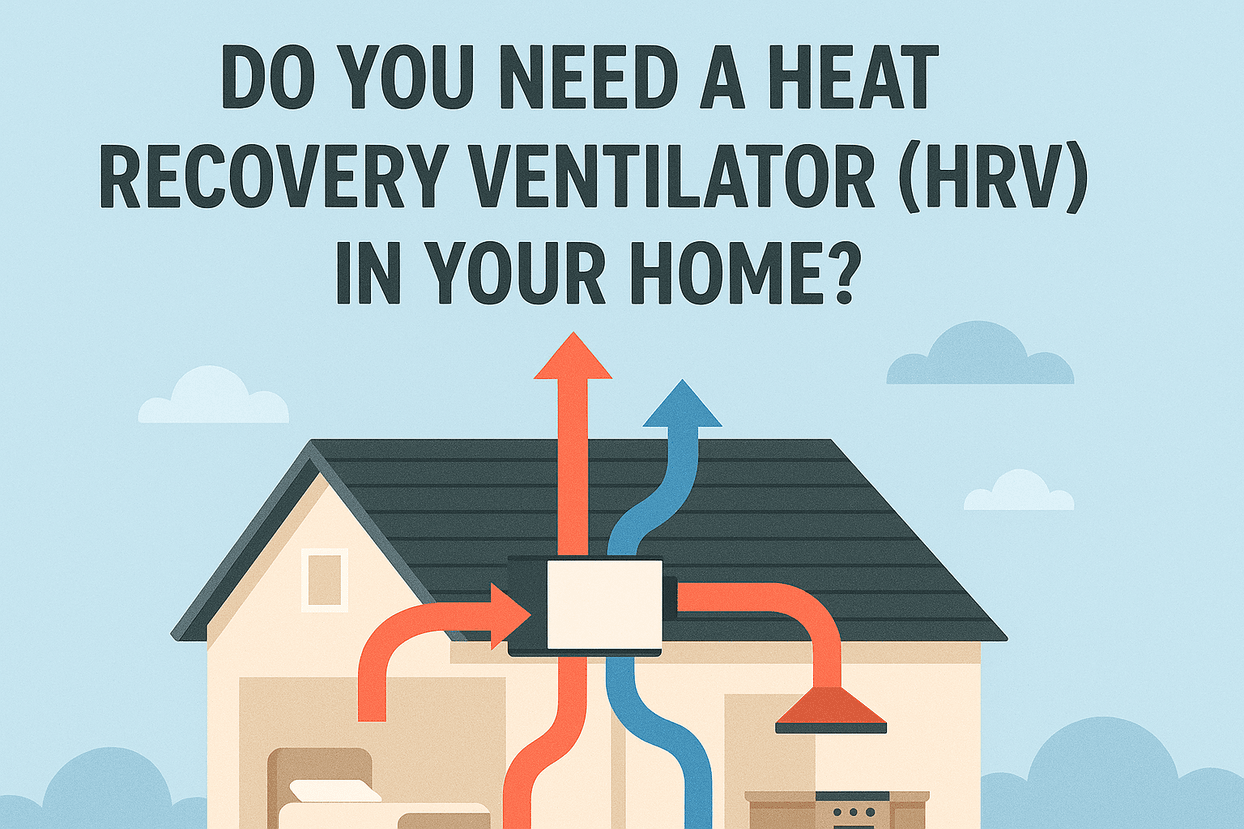Understanding the Purpose of an HRV System
A Heat Recovery Ventilator (HRV) is an advanced ventilation system designed to enhance indoor air quality while maintaining energy efficiency. It functions by exchanging stale indoor air with fresh outdoor air, all while recovering the heat from the outgoing air and transferring it to the incoming fresh air. This process is crucial in modern airtight homes where natural ventilation is limited.
Why Indoor Air Quality Matters More Than Ever
The Environmental Protection Agency (EPA) estimates that indoor air can be 2 to 5 times more polluted than outdoor air. Without proper ventilation, moisture, dust, mold spores, VOC emissions, and carbon dioxide build up inside your home, potentially leading to respiratory issues, allergies, and long-term health problems. An HRV continuously refreshes the indoor air without sacrificing the internal temperature, creating a healthier living environment.
How Does an HRV System Work?
An HRV system uses a heat exchanger core that allows heat to transfer from the warm outgoing air to the cold incoming air during winter and vice versa in summer. The two air streams never mix, but the heat energy is transferred efficiently. This allows your home to stay warm in winter and cool in summer, reducing the workload on your HVAC system.
Key components of an HRV system include:
- Air intake and exhaust ducts
- Filters
- Heat exchanger core
- Fans or blowers
Top Benefits of Installing a Heat Recovery Ventilator
1. Improved Air Quality
By replacing stagnant indoor air with filtered outdoor air, an HRV significantly reduces allergens, pollutants, and odors. This is particularly beneficial for asthmatics, pet owners, and those sensitive to indoor air contaminants.
2. Energy Efficiency
Rather than losing heat through open windows or exhaust fans, HRVs retain up to 90% of heat energy from outgoing air. This lowers heating and cooling costs and helps maintain a stable indoor temperature throughout the year.
3. Moisture and Mold Control
Proper ventilation helps prevent moisture buildup on windows, walls, and ceilings. By maintaining balanced humidity levels, HRVs inhibit the growth of mold and mildew, preserving your home’s structure and protecting your family’s health.
4. Consistent Fresh Air Flow
Unlike natural ventilation that depends on weather, HRVs provide controlled, continuous airflow, regardless of outdoor conditions. This ensures a uniform distribution of clean, fresh air throughout the home.
5. Quiet Operation
Modern HRV units are engineered to be whisper-quiet, blending seamlessly into your home environment without the noise of traditional exhaust fans.
Do You Actually Need an HRV System?
You likely need an HRV system if:
- You live in a newly built or renovated home with airtight construction
- Your home frequently experiences condensation on windows
- You or your family members suffer from allergies or respiratory conditions
- Your home smells musty or you notice stale air
- You’re aiming to reduce energy bills while improving indoor air quality
If you’re unsure, consider hiring a professional HVAC technician to evaluate your home’s ventilation efficiency.
HRV vs. ERV – What’s the Difference?
While both systems enhance ventilation, an Energy Recovery Ventilator (ERV) differs in that it transfers both heat and humidity. If you live in a humid climate, an ERV may help balance both temperature and moisture levels. For cold and dry climates, an HRV is typically the better option.
| Feature | HRV | ERV |
| Transfers Heat | ✅ Yes | ✅ Yes |
| Transfers Humidity | ❌ No | ✅ Yes |
| Best for Dry Climate | ✅ Yes | ❌ No |
| Best for Humid Climate | ❌ No | ✅ Yes |
| Ideal for Cold Winters | ✅ Yes | ✅ Yes |
Installation: What to Expect
Installing an HRV system involves:
- Assessing airflow needs based on home size and occupancy
- Ductwork integration with existing HVAC infrastructure
- Strategic placement of intake and exhaust vents
- Filter installation for optimal air purification
Professional installation ensures efficient operation, quiet performance, and system longevity.
Maintenance Tips for Optimal HRV Performance
- Clean or replace filters every 3–6 months
- Inspect and clean vents regularly to prevent blockages
- Check fans and motors for noise or performance issues
- Annual professional servicing to ensure optimal energy transfer and air quality
Proper maintenance ensures your HRV remains efficient, silent, and effective for years to come.
Cost vs. Value: Is an HRV Worth It?
The average cost of an HRV system ranges from $1,500 to $3,000 including installation, depending on home size and complexity. While this is a significant investment, the long-term benefits—including lower utility bills, better health, and property preservation—often outweigh the upfront costs.
Additionally, many green building certifications, like LEED and Energy Star, recognize and encourage the use of HRVs in residential design. This can increase property value and appeal to eco-conscious buyers.
HRV Integration with Smart Home Systems
Many newer HRV models come equipped with smart controls, enabling homeowners to:
- Monitor indoor air quality
- Adjust fan speeds remotely
- Integrate with home automation systems
These features provide greater control, energy optimization, and real-time health insights for a truly modern ventilation experience.
Conclusion: A Smart Move for Modern Homes
An HRV system is no longer a luxury—it’s a necessity for homes that prioritize health, efficiency, and comfort. Whether you live in a colder region or simply want to reduce indoor air pollutants, a heat recovery ventilator can drastically improve your living environment without compromising energy use.


